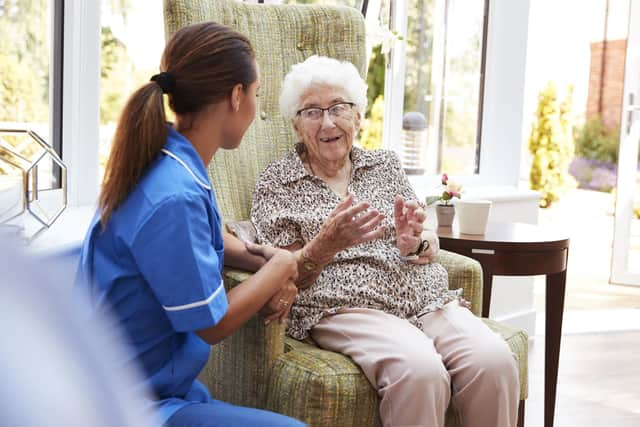How to find advice and funding for the elderly who want to adapt their homes to suit their needs
It calculates that a quarter of the population is projected to be over 65 in less than 20 years, which means that more of us will be affected by accessibility issues.
The RIBA notes that mainstreaming age-friendly design in new-builds can help keep people active socially and economically for longer, reduce dependence on public services and bring wider positive impacts across all generations.
Advertisement
Hide AdAdvertisement
Hide AdYet even if all new-builds were significantly altered to take old age into account, the majority of the UK’s housing stock is old.


That is why The Centre for Ageing Better is also campaigning to make these properties warmer and more efficient to reduce levels of cold-related illnesses such as asthma, strokes, heart disease and mental health conditions.
Older people are more likely to live in cold and draughty homes and analysis shows that properties headed by someone aged 75 or over are the most likely to have the lowest two energy ratings of F and G making them the hardest to heat.
While the fight to make our homes kinder for those in their golden years goes on, there are steps that can be taken now to make existing properties more suitable.
Advertisement
Hide AdAdvertisement
Hide AdAge UK is a mine of information on this and its online fact sheets are jargon free and easy to understand.
It also has support and information hubs in various areas of Yorks hire where you can get great advice on adapting property for old age and eligibility when it comes to funding the changes.
Terry Ashworth from Age UK’s Wakefield District branch says the first port of call is your local authority social services department, where you can ask for a needs assessment to see how your home could be adapted to make life easier.
“A lot of people think they won’t qualify for help but everyone is entitled to a needs assessment
Advertisement
Hide AdAdvertisement
Hide Ad“An occupational therapist will carry out an assessment and then they will advise you on the adaptations and equipment that will help you,” says Terry
“You will then have an expert opinion and a home care plan with a list of what is required, which is very useful even if you don’t qualify for the disabilities facilities grant.” (Sign up for our free newsletters now: https://www.yorkshirepost.co.uk/newsletter)
She adds: “A lot of people assume they won’t qualify for a grant because they own their own home but your home is not taken into account when the calculation for funding is done. It is income, savings and second homes that are taken into account.”
Items that will help you adapt your home include grab rails, handrails, stair lifts, blocks to make chairs and beds higher plus a raised toilet and bath seats. Larger scale projects such as a wet room or an extension may also qualify for funding.
Advertisement
Hide AdAdvertisement
Hide Ad“I had one client who had a stairlift but their mobility worsened and the local authority funded a lift that travels from the bedroom to the ground floor and back,” says Terry.
There is a push on helping people to stay in their own homes, not least because the cost of care home fees are high and add to the government’s care cost bills, though the benefits of staying in your own home within a community you know and love have proved to be good for wellbeing.
Here are some Age UK tips on making an existing home more old age friendly: A hand rail or ramp could help if there are steps up to your front door. Think about adding an outdoor light to help you when it’s dark.
Powered riser recliner chairs, which help you get in and out of a chair, are popular, as are easy access showers with a shower seat, which can help prevent falls.
Advertisement
Hide AdAdvertisement
Hide AdMotion sensor lights that turn themselves on when you get out of bed could prevent you tripping over something in the dark.
Adjustable beds with controls that make it easier to get out of bed are helpful as is a stair lift or a second hand rail to help you up and downstairs.
For details of AgeUK care hubs in your area searching online is best as all are independent from each other. They can offer information and advice on the phone and can help you fill out complicated forms.
Visit Age UK at www.ageuk.org.uk/services for more online advice including fact sheets on a range of ageing issues. Fact sheet 42 explains the needs assessment form.